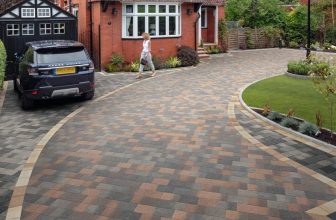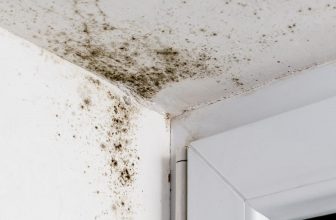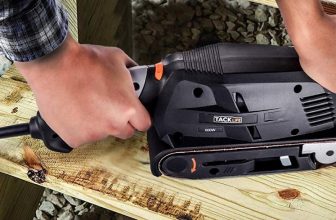There are some people out there who skip this valuable stage of painting the exterior of a house, but it is not the sort fo mistake to make twice. A primer is an essential part of what extends the lifespan of exterior paint and helps keep a home looking its best for longer. Because this is not the sort of job you want to have to do too often, it is always best to do it properly. Before the paint, comes a primer, and there are certain ways you can make the application easier. The following is a guide on how to apply exterior paint, and some other useful advice.
What Does Primer Do?
It’s always good to get a better understand so you can decide which product is best. Primer is a bit like an adhesive and less like paint as it helps the paint to stick to the wall but provides a smooth surface to paint over which can make everything look a lot tidier. There are different types of primers to choose from including some that are ideal for preventing stains from clinging to the outside of your house.
It All Starts With The Right Exterior Primer
Before you get started, make sure you have the right product. A primer needs to complement the type of paint you are looking to apply. Since the two main types are oil-based and water-based exterior paint, make sure you get the relevant primer depending on which type you go for.
Water-Based Primer
These are popular because there are often more affordable and have multiple uses. They are quick to dry usually taking only a few hours with some products even less than an hour. Most water-based primers have low odor and when used properly can help to provide a consistent look.
Oil Based Primer
These last a long time but do take longer to dry, sometimes up to 24 hours. This can mean you are waiting a while between coats. They are usually used on woods and can help block stains whilst resisting mildew.
Latex
Latex is another popular choice as it is often fine. to use on brick, stone, and wood depending on the product. They seal porous surfaces and can be. fast drying compared to a lot of the other options. Still, they are not always so good for stain blocking.
How To Apply Exterior Primer
- The best approach is to start by washing the exterior of your home. This can be achieved with a sponge and some soapy water but if you want to clean it thoroughly then use a power washer. Wait for the surface to dry properly before lifting loose paint.
- Use a scraper to remove loose paint, blemishes, and any peeling. Don’t overdo any one area or you can make matters worse.
- Fill in any gaps. For wood, use a specific wood filler then sand any rough areas to leave the surface even after drying.
- Next, follow the instructions from the primer brand you are using. Use a wide brush and an even amount, working over the surface of the exterior of the house.
- Wait for the primer to dry (checking the recommended drying time) before applying paint. Since it is used as an adhesive, you don’t want to wait too long between the drying of the primer and applying the paint or it will lose its effectiveness.
When Should A Primer Be Used With Exterior?
Because of the harsh environment, an exterior is up against, it is always a good idea to use a primer before painting. The UV rays alone can cause damage that you will want to protect your home against the nest time it comes to painting. The weather can prevent new paint from sticking as it should which can result in the need for painting again before you would hope to have to.
What Are The Best Conditions For Using Exterior Primer?
As with the paint stage, applying an exterior primer will be better under certain conditions. The timing has a lot to do with how successful it will be at providing a surface for the paint to adhere to. Choose a day where there isn’t a lot of wind or it will dry faster than it should, and a temperature that sits somewhere between 60 degrees F and 85 degrees F.
A hot sweaty day with high humidity is also not going to help so peak summer or humidity is not the right time to apply exterior primer. Fluctuations in the weather can cause cracking so try to apply on a day where the temperature is not going to drop significantly overnight.
Can I Apply Exterior Primer Before It Rains?
Anytime there is rain due within the next 4- 8 hours, it can be better to wait for another time to apply the primer. Not only will the rain impact some of its effectiveness as an adhesive for the paint, but rain contains dirt that can undo a lot of the good work you have done, cleaning the exterior before priming.
Don’t apply primer too soon after rain, and not when there is a downpour incoming.
Can I Apply Exterior Primer In Cold Weather?
Although the cold is not the best for applying a primer, it can be done. There are acrylic paints that are designed to be used in lower temperatures but it is still better to apply during daylight hours so it has the best chance of drying faster. You don’t want the temperature to go below 35 degrees F or it will take a particularly long time to dry.
You will be facing a long task on your hands applying a primer and paint at this time of year as because the temperature will decrease even further in the night, the drying time can take much longer than it would if you waited for the warmer months.
How Long Does Exterior Paint Last?
This depends on a few things, notably the type of primer you use and the quality of the product. Also, the conditions of the area you live in will be a major factor. Expect to be able to wait between 5 – 10 years before you notice there is a need for a fresh paint job on the exterior of your house. When you prepare the exterior properly and use a quality primer the poaint will last longer so it is better to spend a few hours on this to get years more out of the exterior paint.





